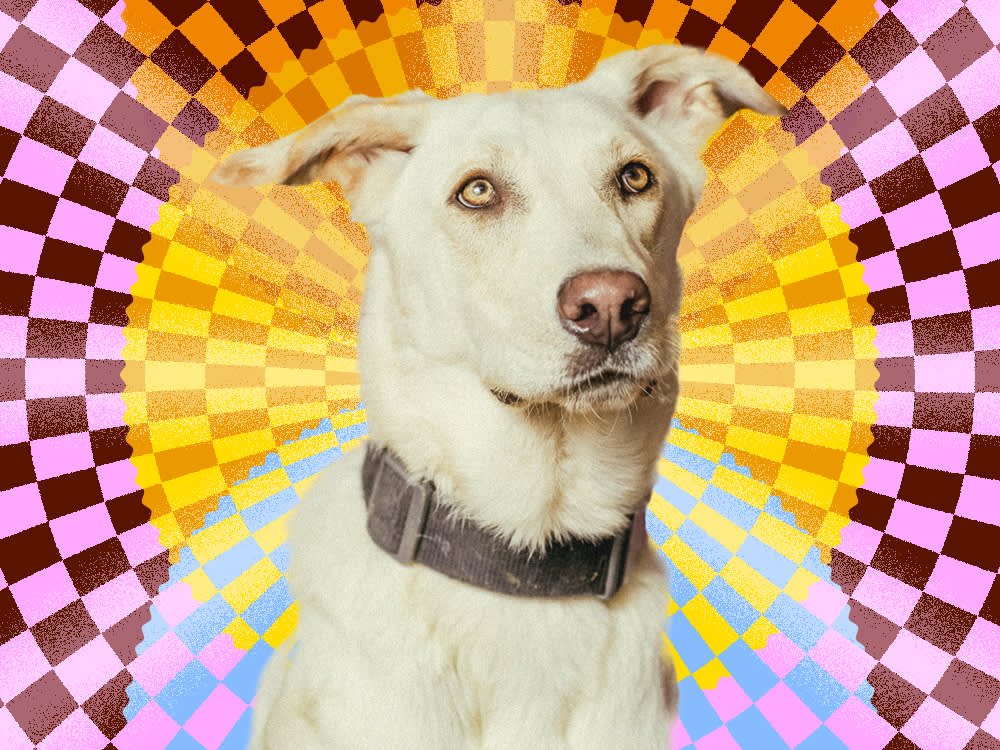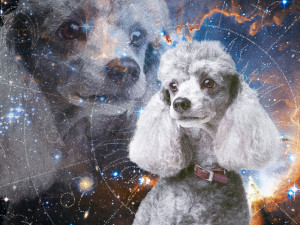Animal Instincts: Entering the Realm of Pet Psychics
Animal communicators in NYC and LA illuminate us on what your pets are really thinking.
You got to get away from words if you want to understand any animal. It thinks in pictures, it thinks in smells, it thinks in touch sensations — little sound bites like it’s a very detailed memory.” — Temple Grandin
Revered scientist and animal behaviorist Temple Grandin has long drawn a connection between the way animals and those with autism, like herself, think. While many humans process thoughts using a combination of verbal and visual cues, Grandin thinks in pictures. The same is true for animals who, like people with autism, think by making visual associations.
Grandin has devoted her life to studying animal behavior and improving upon how they are treated and perceived, and the task of an animal communicator is to translate how animals think. “It’s like an interpreter for an animal to help their humans better understand the animal’s needs, concerns, and behaviors by projecting images and feelings,” says Keao, an animal communicator in Los Angeles. The exchange of information that happens between animal and communicator is an intentional one.
“It takes place in the subtle energetic realm, which is beyond what our five senses usually detect,” says Olivia La Barre, a New York City-based animal communicator, who adds that during her conversations she may see faint images, words or scenes; feel a slight physical sensation or emotion, or even faintly taste or smell something. “I actually believe that all people are born with the ability to communicate with animals in this way, but not everyone chooses to develop it or do it professionally, and many people aren’t even aware of it.”
How much do you spend on your pet per year?
“I let animals lead the conversation. Often, they’ll start by telling me about their personality and other things that let you know that it’s actually them I’m connecting with.”
— Olivia La Barre
Keao and LaBarre’s paths to it were different. Keao recalls a feeling of knowing that she had a gift of seeing at age nine and credits her dog at the time, Toby, with helping bring that gift to light. “He really opened the channel for me,” says Keao. “From there it was a matter of learning, trusting the messages being received and tons of practice.”
LaBarre spent 15 years building a career as an editor and writer before shifting gears, realizing how deeply unhappy she was in the corporate world and, simultaneously, like a spiritual element was missing from her life. She trained in Reiki and enrolled in psychic development classes. When her dog Milo started inexplicably pooping on the floor, her psychic development teacher suggested she simply ask him why. “I thought she was joking at first, but she said I could use some of the same tools that I learned in her classes,” LaBarre shares. “I did it and it opened up a whole new world to me, one where I already had everything I needed to communicate with animals and nature.”
While both Keao and LaBarre work primarily on health concerns and behavior problems with domestic animals like dogs and cats, their clients have also included, horses, rabbits, rats, even a bearded dragon. Amidst COVID restrictions, their sessions have been relegated, like so much else to Zoom or the phone, but that hasn’t hampered their ability to facilitate productive conversations. “I let animals lead the conversation,” explains LaBarre, whose clients often commend her compassionate and supportive approach. “Often, they’ll start by telling me about their personality and other things that let you know that it’s actually them I’m connecting with.” Skeptics, perhaps unsurprisingly, abound — “Some are initially skeptical but that’s healthy,” says Keao. “Even I was skeptical.”
“Right now, with the pandemic, I’m working with a lot of anxiousness being felt by the animals.”
— Keao
While the emotional toll on humans that the turmoil of the past year has surfaced has been widely documented, Keao says that animals have suffered the ripple effect. “Right now, with the pandemic, I’m working with a lot of anxiousness being felt by the animals,” she adds. The ability to aid in an animal’s healing is, for LaBarre what’s been so immensely gratifying about her chosen path. “I love to see the transformation that happens,” she says. “People often come to me distressed or frustrated and leave feeling enlightened, empowered, and with a deeper understanding of their animal companions than they ever realized was possible...even after they’ve passed.”
In fact, some of the most profound experiences of both LaBarre and Keao’s careers have come from working with animals who have passed or are getting ready to cross over. Keao describes a reading she did with a 12-year-old Lab named Dexter who, when asked what he would like for his last days, showed her carrot cake. “Articulating what I saw, my client laughed and remembered a few years ago when Dexter devoured an entire carrot cake that was left on the counter,” she says, adding that Dexter did indeed receive his own piece before passing. “At the end of this reading a chocolate Lab came into my vision and my client said that was her family dog Kona who had passed away. Kona let her know that he’ll be there waiting for Dexter.”
To be a voice for animals who have never been heard is what drives her, says Keao, whose email signature is a Jane Goodall quote that reads: “The least I can do is speak out for those who cannot speak for themselves.” And, LaBarre adds, in being a voice for animals, we can also learn a lot from them. “Animals can be our teachers,” she says. “They have a lot to say if we’re open to listening.”




